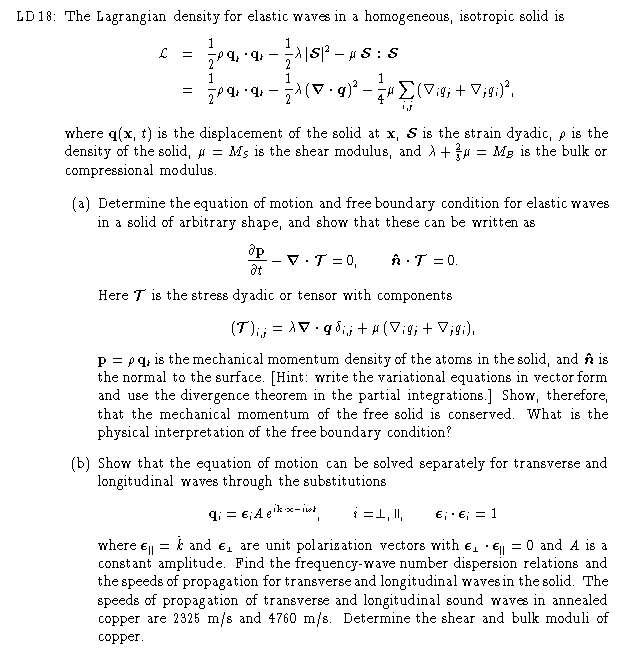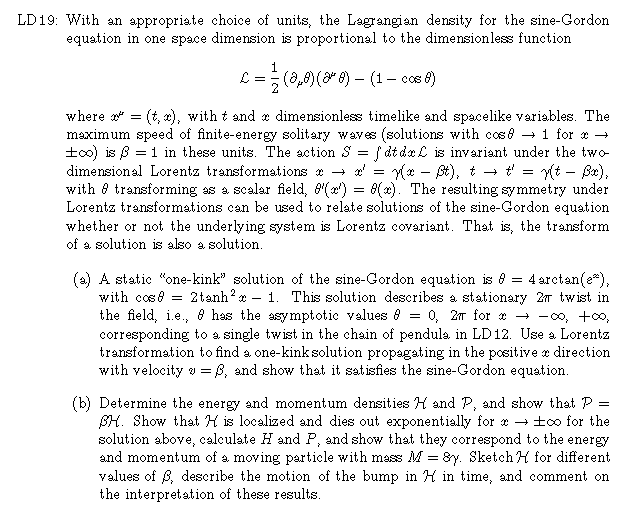

PROBLEM SET 10
Due Friday, April 23, 1999
Reading: Goldstein, Chaps. 9, 10


Parts (a) and (c) in this problem show the difference between
the mechanical momentum density of an elastic solid defined as the
product of the local mass density and velocity,
 , and the momentum density associated with
waves in the solid. The equation of motion, or flow equation for the
mechanical momentum, states that the Noether current
associated with rigid translations of q is conserved. The
conservation of the energy-momentum tensor, in constrast, follows from
Noether's theorem and the invariance of the action under rigid translations
of the coordinates x. The energy density in the waves is H =
T00, while P = T0i. , and the momentum density associated with
waves in the solid. The equation of motion, or flow equation for the
mechanical momentum, states that the Noether current
associated with rigid translations of q is conserved. The
conservation of the energy-momentum tensor, in constrast, follows from
Noether's theorem and the invariance of the action under rigid translations
of the coordinates x. The energy density in the waves is H =
T00, while P = T0i.
|

|
The one-kink solution corresponds to a single twist in the long
chain of coupled pendula treated in the mechanical model in LD 12. For an
infinite chain, or a
chain with the ends clamped, there is no way to undo the twist through
oscillations of the pendula. The topologies of the twisted and untwisted
chains are different. The sine-Gordon equation has an infinite
set of twist solutions with distict topologies
specified by the total twist, positive or
negative, between the endpoints. These have finite total energies as here,
with the energy density localized near the twists. The moving excitations
are called "solitons". Alwyn Scott, formerly in Engineering at UW, built a mechanical model of the type discussed. It was possible to see the Lorentz contraction of the kink as its speed was increased. Relativity works! |
Send comments or questions to: ldurand@theory2.physics.wisc.edu
© 1997, 1998, 1999 Loyal Durand